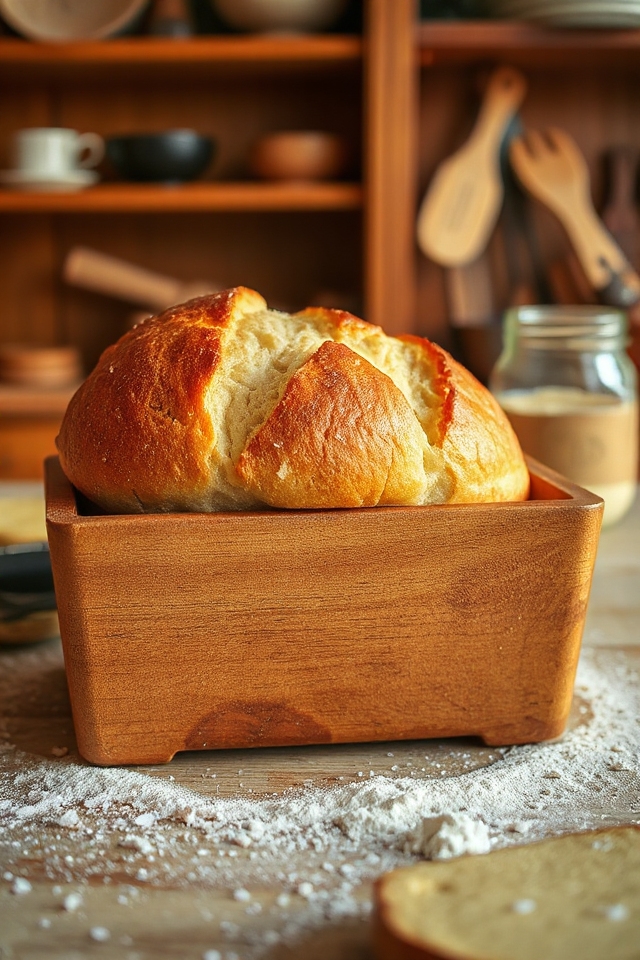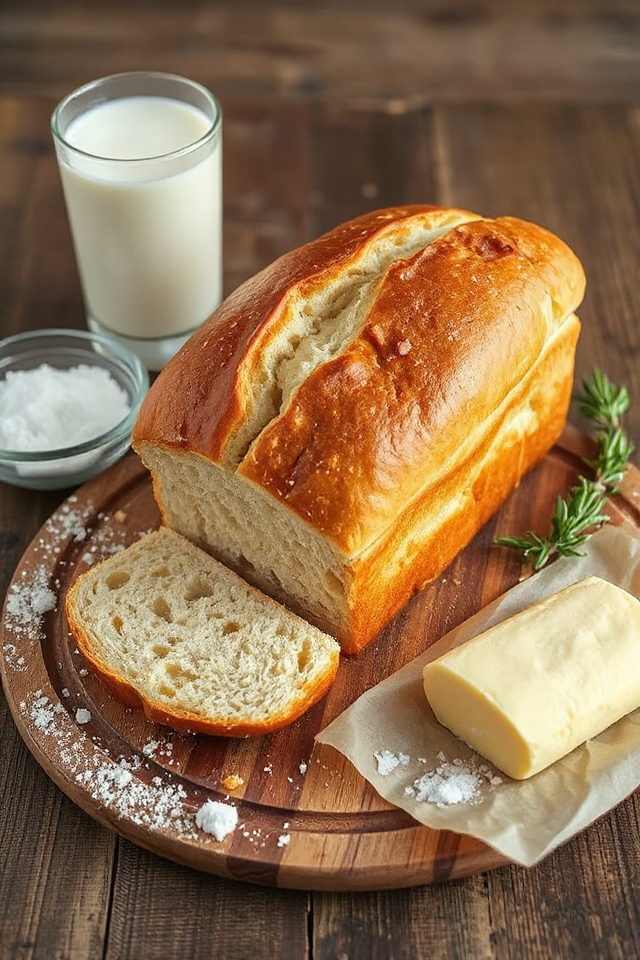Why You’ll Love This Basic Sourdough Bread Recipe
If you’ve ever tasted freshly baked sourdough, you know just how irresistible it can be. This basic sourdough bread recipe is a game changer. The crust is perfectly golden and crisp, while the inside is soft and chewy, with that delightful tang.
I love how simple it’s to make, yet it yields impressive results. You don’t need fancy ingredients or equipment—just a little patience and your sourdough starter.
The aroma that fills your kitchen while it bakes is pure bliss. Trust me, once you try this recipe, you’ll be hooked and want to share it with everyone you know!
Ingredients of Basic Sourdough Bread
Making sourdough bread is like a little adventure in your kitchen, and it all begins with gathering the right ingredients. Trust me, once you have everything ready, you’ll feel like a true bread artisan. The good news is, you likely have most of these ingredients in your pantry, and the few extras are easy to find.
Plus, there’s just something magical about using a sourdough starter that you’ve nurtured—it’s like a pet, only it doesn’t need to be walked.
Here’s what you’ll need to whip up a lovely loaf of basic sourdough bread:
- 2 cups proofed sourdough starter
- 1 tablespoon butter
- 1/2 cup milk
- 1 teaspoon salt
- 1 tablespoon sugar
- 3 cups white bread flour
Now, let’s chat about those ingredients for a moment. The sourdough starter is the star of the show, so make sure it’s nice and bubbly before you begin. If you’re unsure how to proof it, just remember that it’s all about giving it time to wake up and get lively.
Also, the butter adds richness, while the milk contributes to that soft, tender crumb we all love. And don’t skimp on the salt and sugar—they’re essential for flavor and help with the bread’s rise. It’s kind of like adding the right spices to your favorite dish; they elevate everything.
How to Make Basic Sourdough Bread

Making your own basic sourdough bread isn’t just a cooking task; it’s an experience that connects you to the art of bread-making. Start by gathering your ingredients: you’ll need 2 cups of proofed sourdough starter, 1 tablespoon of butter, 1/2 cup of milk, 1 teaspoon of salt, 1 tablespoon of sugar, and 3 cups of white bread flour.
If you haven’t proofed your starter yet, no worries. Just mix 1 cup of your starter with 1 1/2 cups of flour and 1 1/2 cups of warm water, cover it loosely, and let it sit for about 8 to 12 hours. This step is essential for that lovely tangy flavor we all crave.
Once your starter is nice and bubbly, it’s time to blend the magic. Pour your 2 cups of proofed starter into a mixing bowl. Melt 1 tablespoon of butter (the microwave is perfect for this) and then add in 1/2 cup of milk, warming it briefly until it’s about 85 degrees F. Stir in the salt and sugar until they dissolve; this is where the flavor begins to come alive.
Now, combine this mixture with your bubbly starter and give it a good stir. This is the moment when you can feel like a mad scientist in the kitchen. Gradually add in the 3 cups of flour, one cup at a time, mixing until the dough becomes too stiff to continue with a spoon. This is your cue to get your hands in there.
Turn the dough out onto a floured surface and knead in any remaining flour until the dough is smooth and satiny. Take a moment to appreciate that you’re actually making bread—how cool is that?
Next, shape the dough into a 1-inch thick oval and roll it up from the long side, pinching the seam as you go. Tuck the ends in to form your loaf, and place it in a lightly greased loaf pan. Cover it and let it rise at a cozy 85 degrees F for 1 1/2 to 3 hours. You’ll know it’s ready when it rises about 1 to 2 inches above the pan’s edge.
Preheat your oven to 375 degrees F, then bake the loaf for 10 minutes. After that, lower the heat to 350 degrees F and bake for another 30 to 40 minutes. Every oven is different, so keep an eye on it.
Once it’s golden brown and smells like heaven, brush the top with melted butter and let it cool on a wire rack. And there you have it—your very own homemade sourdough bread. Isn’t that just the best?
Basic Sourdough Bread Substitutions & Variations
While the classic sourdough recipe is a delightful way to enjoy homemade bread, experimenting with substitutions and variations can elevate your baking experience.
For a nuttier flavor, try using whole wheat or spelt flour instead of white bread flour. If you’re dairy-free, substitute the milk with almond or oat milk.
You can also add herbs, garlic, or cheese for a savory twist. For a touch of sweetness, consider incorporating honey or maple syrup in place of sugar.
Finally, adding seeds like sunflower or pumpkin can enhance texture and nutrition. Feel free to get creative and make it your own!
Additional Tips & Notes
To guarantee your sourdough bread turns out perfectly every time, it’s helpful to pay attention to a few key details.
First, make certain your starter is active and bubbly; this will impact the rise and flavor.
I always use a kitchen scale for measuring ingredients, as it guarantees precision.
Don’t rush the rising time; let the dough double in size for the best texture.
Also, feel free to adjust the baking time based on your oven—every one behaves differently.
Finally, if you want a crustier loaf, try placing a pan of water in the oven to create steam.
Enjoy baking!
